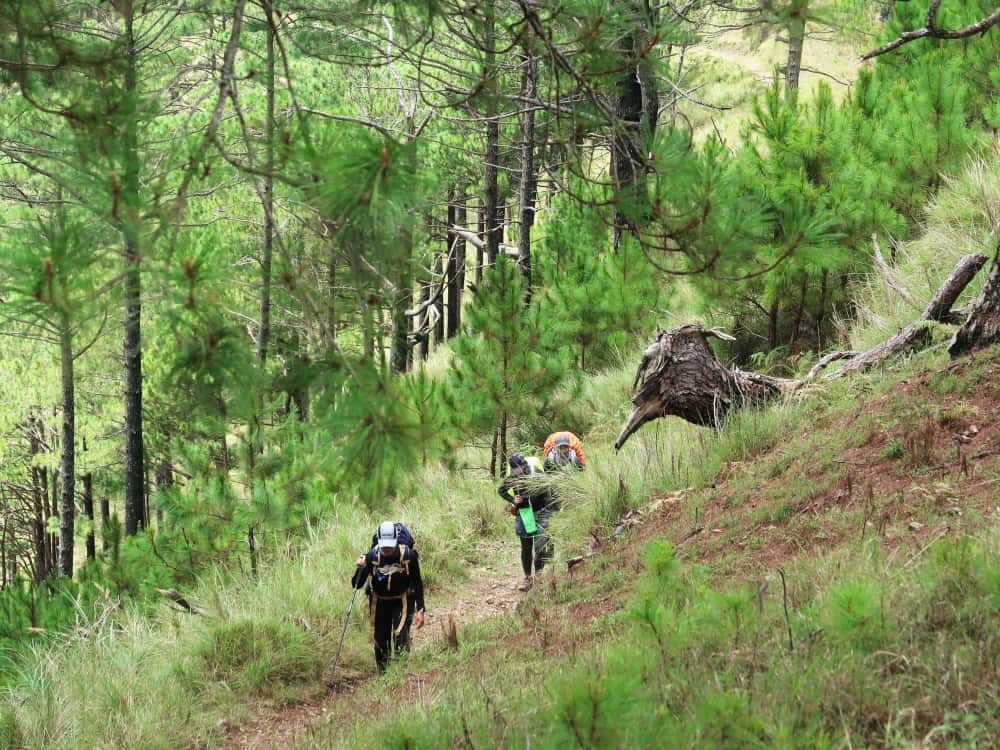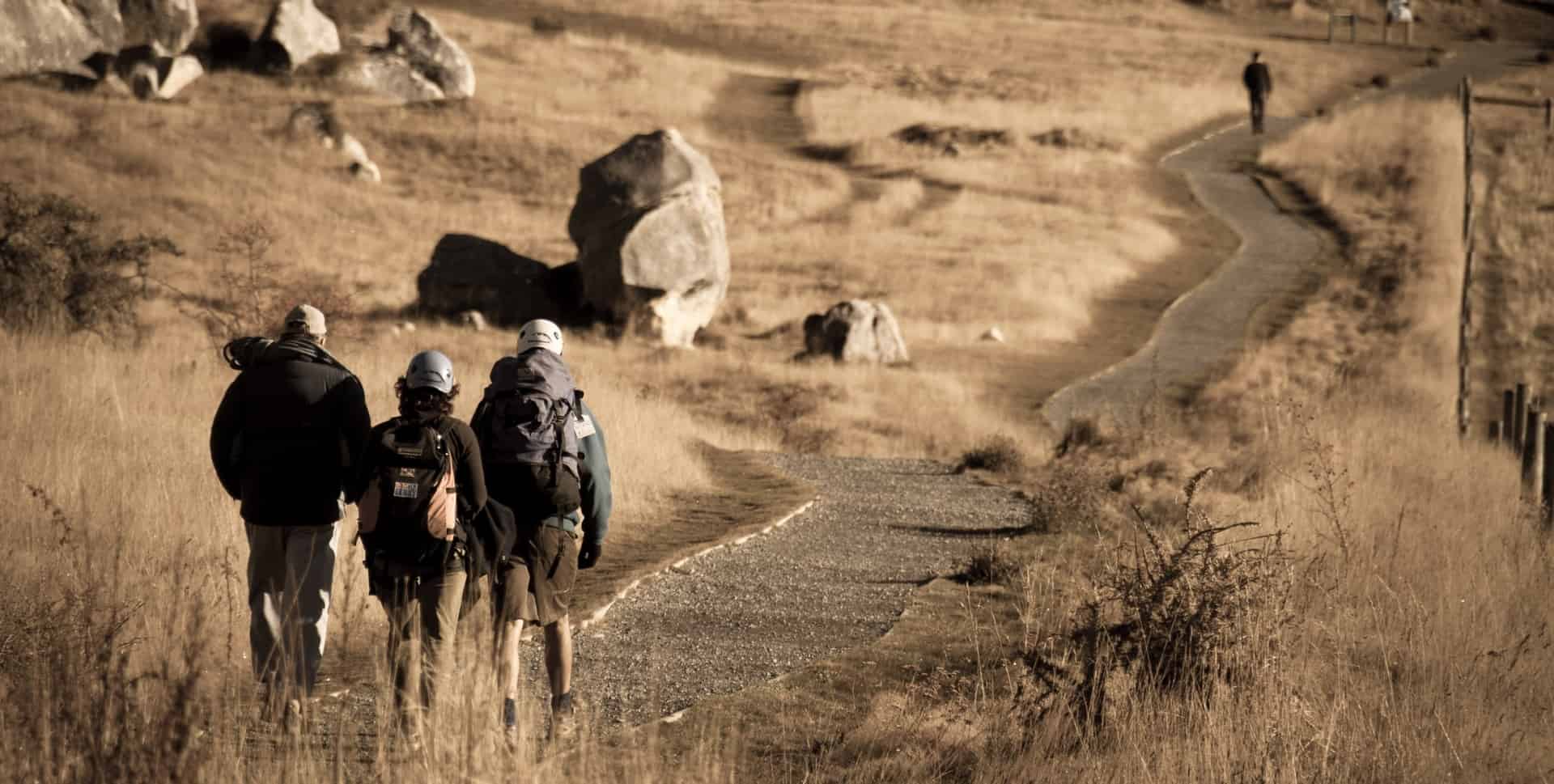So you want to take camping to a whole new level and try hiking and trekking for a week or so. It’s a great idea and you’ll have lots of fun and learn a heap of things about yourself – BUT it’s very different from car camping.
You’ll need to ditch lots of stuff that you can carry in a car and lighten the load as much as you can so that you have the essentials and don’t want to put too much pressure on your feet and knees with an unnecessarily heavy load.
So what exactly will you need on your first week-long hiking trip and what can you ditch? We have compiled a list of what you will need for the week along with hints, tips and suggestions for people attempting a 7 day backpacking trip for the first time.
Check out what you will and won’t need in our 7-day backpacking checklist!
Shelter
-
Lightest tent, poles, and rainfly
-
Stakes/pegs
-
Mallet or rock
-
A extra tarp for sun/rain if needed
- Add new
Sleeping
-
15-20° Lightest sleeping bag
-
Inflatable sleeping pad
-
Stuff sack to keep your sleeping bag dry
- Add new
Walking
-
Hiking or trekking poles
-
Boots and / or trail runners
-
40-65 liter internal frame backpack
-
Permits
- Add new
Cooking & Eating
-
1x Cooking pot
-
1x Spoon or spork
-
Multi-Tool incl knife
-
Canister camping stove
-
Extra stove fuel, lighter
-
2x firestarters – just in case
-
Resealable plastic bags for food storage
-
Stuff sack for food
-
Water bottle or bladder (personal preference)
-
Bear bag/canister (if required by park regulations)
-
Dishcloth
-
Water purification system
- Add new
Wet weather protection
-
Rain and wind jacket
-
Waterproof pack cover
- Add new
Clothing
-
Wool or synthetic base layer – that you literally won’t take off
-
Long-sleeved mid-layer
-
1x Hiking bottoms. Synthetic
-
Insulating jacket, top layer, down or synthetic
-
1x Rain pants – check your guide to see if you’ll need them on your trail
-
1x Rain and wind jacket
-
Woolen gloves, if it will be cold
-
Beanie. Merino or synthetic
-
2x underwear, 1x sports bra
-
3x Socks
-
Plastic bag for dirty/wet clothes
-
Stuff sack to keep camp clothes dry.
-
Camp clothes: Wool polyester or synthetic leggings and a spare top
-
Camp shoes/sandals to give your feet a break
- Add new
Take merino wool socks if you can. One for camp, two for walking and, if you want, an additional thick pair of socks for cold nights.
Toiletries
-
Toilet paper and ziplock to carry out used paper
-
Toilet trowel
-
Fold up toothbrush
-
Sample size toothpaste
-
Antibacterial soap
-
Medications
-
Waterless hand sanitizer
-
Small quick-dry towel
-
Hairbrush
-
Anti-chafe
- Add new
First Aid Kit
-
Gauze pads
-
Duct tape (works as a bandage, splint, covering)
-
Antibiotic cream
-
Painkiller
-
Anti-diarrhea tablets
-
Antihistamine
-
Sewing needle with dental floss for thread
-
Blister tape
- Add new
Personal Protection
-
Sunscreen
-
Chapstick or lip balm
-
Sunglasses
-
Insect repellent
-
GPS subscription
- Add new
Lighting
-
Headlamp
-
Spare Battery
- Add new
Luxuries
-
Smartphone in a protective phone case and power bank
-
Download a guide to your walking area
-
Downloaded books, star charts, and field guides
-
Notebook and pencils (pencils write on wet-ish paper)
-
Camera
- Add new
Useful things
-
Compass or navigation device
-
Credit card/cash/Identification
-
Watch
-
Parachute cord
-
Emergency beacon
-
Tent pole repair
- Add new

Hints, tips, and hacks for first time 7 day backpackers
Packing
- Use a list. Don’t forget any of the essential things that you will need.
- The big four that weigh the most and take up the most room are your backpack, tent, sleeping bag, and sleeping pad. These are the items to cut the most weight from by getting the lightest ones you can.
- Think about using a hammock with a rain fly and bug net, a Bivy or a Tarp setup rather than a tent to save even more weight.
- If the ground is soft enough, you may be able to leave the tent footprint behind.
- Don’t take too many clothes. It’s a typical beginner’s miscalculation. Embrace the dirt and save your back, knees, and feet. A warm base layer, two sets of alternate hiking clothes, and a dry, warm set for camp are all you will need. Truly.
- Get a pack that fits you properly. Seven days is a long time to be uncomfortable…
- Ziploc bags are your backpacking friend. They keep items dry and waterproof and can retain the smell of used toilet paper and food scraps really well as well. Don’t skimp on the quality of a ziplock bag!
- Pack the lightest gear first (yes, Your sleeping bag goes on the bottom) and keep the heavy gear towards the top of your pack close to your body to keep your balance when walking rough terrain.
Food
- Eat your heaviest foods first. Your neck, back, and shoulders will thank you as the days roll on!
- Plan your meals. Don’t take random food and try to create meals from what you bring along. You can get away with that when you are car camping and can bring food “just in case,” but out in the backcountry, you need to have enough good high calorie food each day.
- Bring a treat to look forward to each day. A chocolate bar, some boiled lollies, and a few gummy bears can make all the difference to your mood!
- Use your cooking pot as a mug, cup, plate, and bowl to save weight and space.
- A long-handled spoon and a knife will be all you need to open packets, cut things up, stir and eat with. Don’t bring a whole dinner set of cutlery. Let as many things as you can multi-task or have multiple uses.
Clothing
- Always wear shoes that have already been broken in. A week’s hiking trip is not the place to test or break in new shoes.
- A pro tip: Waterproof boots and shoes take a lot longer to dry out than non-waterproof footwear does once you get it wet in a creek or river..
- Cotton is not the best material for hiking. It absorbs moisture, doesn’t wick away from the skin, and is a poor insulator. It also retains odors really well… Go with woolen or synthetic hiking clothes for durability, warmth, and performance.
Walking
- Drink as much as you can at every opportunity. Water is heavy and best carried in your stomach than on your back.
- Make sure you are fit enough before you leave by training with your (full) backpack and boots so you know what needs adjusting.
- If you rely on electronics for maps, cameras, navigation, etc, bring along a power pack to recharge it.
A seven-day backpacking trip is a fantastic trip to plan and actually finish. The sense of accomplishment on completing a week of living off your back is just incredible and can up your self-confidence no end. But the devil is in the detail, so make sure you plan and prepare for these types of trips and don’t attempt them on a whim.
Pack and repack. Check and recheck. You don’t want to be out on your first night without food, water, matches, or a tent! Make sure you are fit enough and have used everything you are taking with you before you leave. Don’t wait until it’s dark and raining and you’re wet and hungry to figure out how to use that brand new camp stove!
The more often you do multi-night hikes, the more you will know what works for you and what doesn’t. You’ll be able to know what gear you need for your level of comfort and what your body can handle. The best way to make decisions about gear is to use it in the field!
This list has been compiled to give you an idea of how much (or how little) you will need to do these 7 day backpacking hikes and to start you thinking about planning and working towards knocking over one of your own first-week long hiking trips!
Happy Hiking!😊
Next up: Looking for a shorter trip? Check out our 3 day backpacking checklist.
Next up: How do all the different types of tent poles stack up? Find out in our guide to aluminum vs fiberglass tent pole comparison.
